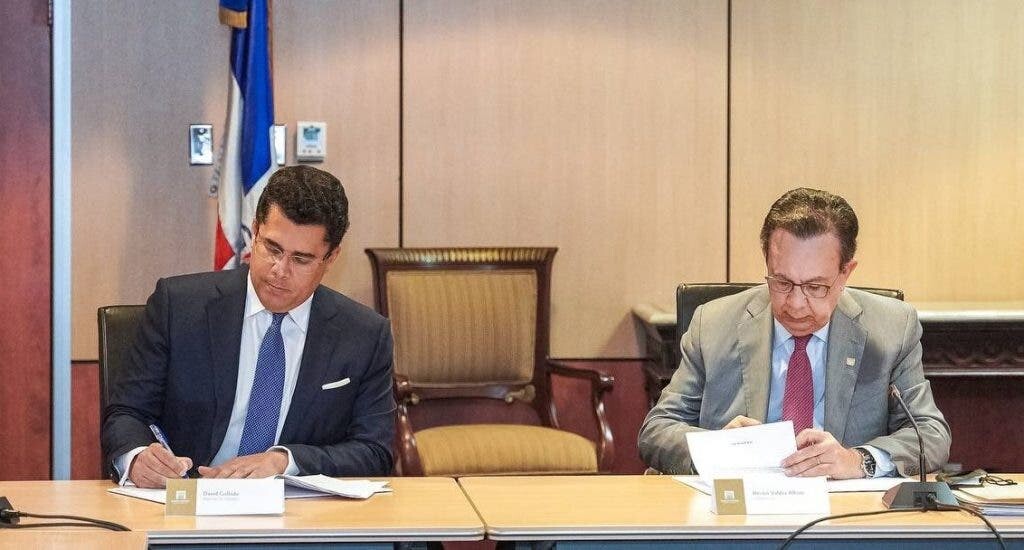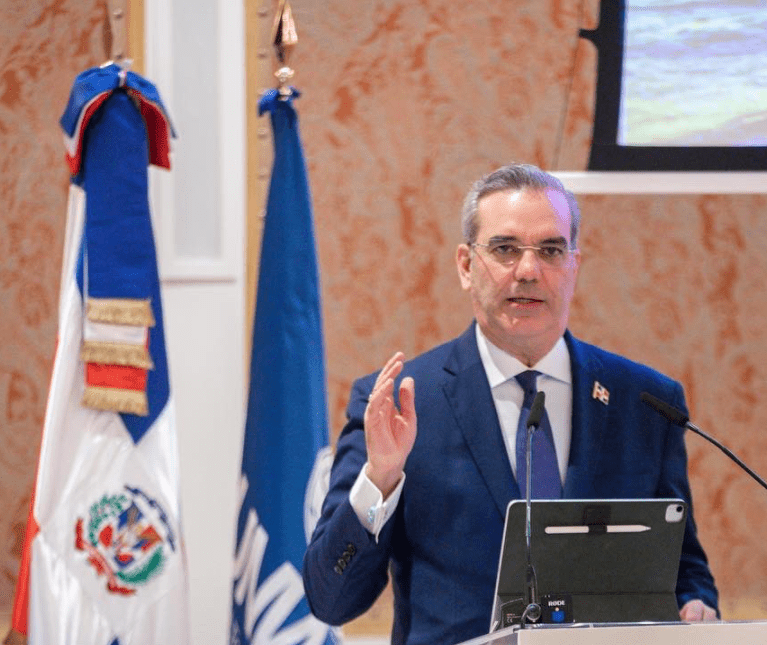Authorities sign a tourism information exchange agreement

The Minister of Tourism, David Collado, and the Governor of the Central Bank, Héctor Valdez Albizu, signed a memorandum of understanding that establishes a cooperation framework for the exchange of information between both institutions.
The document is aimed at quantifying and improving efforts to attract tourists from potential markets around the world.
This information will make it possible to share statistical data on tourism investment; the number of establishments belonging to the sector and their evolution; how many tourists come each day and from where; how many come alone, as a couple or with their relatives; how many are millennials or belong to different generations; among other information. This will be decisive for planning work sessions in which strategies are defined to strengthen and broaden the monitoring of the sector.
Minister Collado said that the agreement facilitates the focus of the effort to attract potential tourists to destinations in the Dominican Republic so that we achieve greater efficiency of the resources available to promote tourism in our country.
“It is our obligation to know what we are investing our resources in and where we are most effective, which cities we must reach with our offer, which population centers to redouble our efforts”, he said.
Collado added that “we are at 153% of reservations and sales for this year in the Dominican Republic, compared to the data for January 2018, which was the year with the best tourism results for the country”. He also said that “what the DR is doing is an example for the entire region, as indicated by the World Tourism Organization”.
The official reported that a group of high-level young people has formed an intelligence system in the Ministry of Tourism whose common work has resulted in extraordinary results as never before for tourism in the Republic have been obtained in the last sixty days.
The Minister of Tourism highlighted the importance for his ministry to work alongside an institution such as the Central Bank, whose credibility in the field of collecting macroeconomic figures and data is irrefutable, thus responding to the clear vision of what expressed by President Luis Abinader regarding the need for joint support among all the institutions of the nation.
In turn, he represented the privilege of signing this agreement with Governor Valdez Albizu, whom he considered a faithful guarantor of the macroeconomic stability of the Dominican Republic.
On his side, the governor indicated that “the signing of this memorandum is a transcendental step for the qualification of a sector that represents one of the main currency generators for the Dominican Republic”.
He said that, in a recent meeting with authorities of the IMF, the United States Treasury, presidents of central banks, and finance ministers of the region, he highlighted the effort that is being made in this area, as well as the excellent results that are already being carried out. obtaining, which will improve in 2022, even with respect to those obtained in 2019.
Valdez Albizu highlighted the importance of objectively identifying market niches to achieve the best possible results, relocating investment in countries by optimizing data and calculation systems. He added that the Central Bank and his technical team will offer all the logistical and planning support necessary for the Tourism sector to achieve the expected positive results.
The signing ceremony of the memorandum of understanding was attended, along with Minister Collado, by Technical Vice Minister Jacqueline Mora; the director of Economic Studies Enrique Penson; Intelligence Director Sarah Sanchís; and the director of Economic Research Liliana Cruz.
The governor was accompanied by Vice Governor Clarisa de la Rocha de Torres; the Deputy Manager of Monetary, Exchange and Financial Policies Joel Tejeda; the deputy manager of National Accounts and Economic Statistics Ramón González; the economic advisor of the Government Julio Andújar Scheker; the legal consultant Olga Morel; and the director of the Department of National Accounts and Economic Statistics Elina Rosario.






